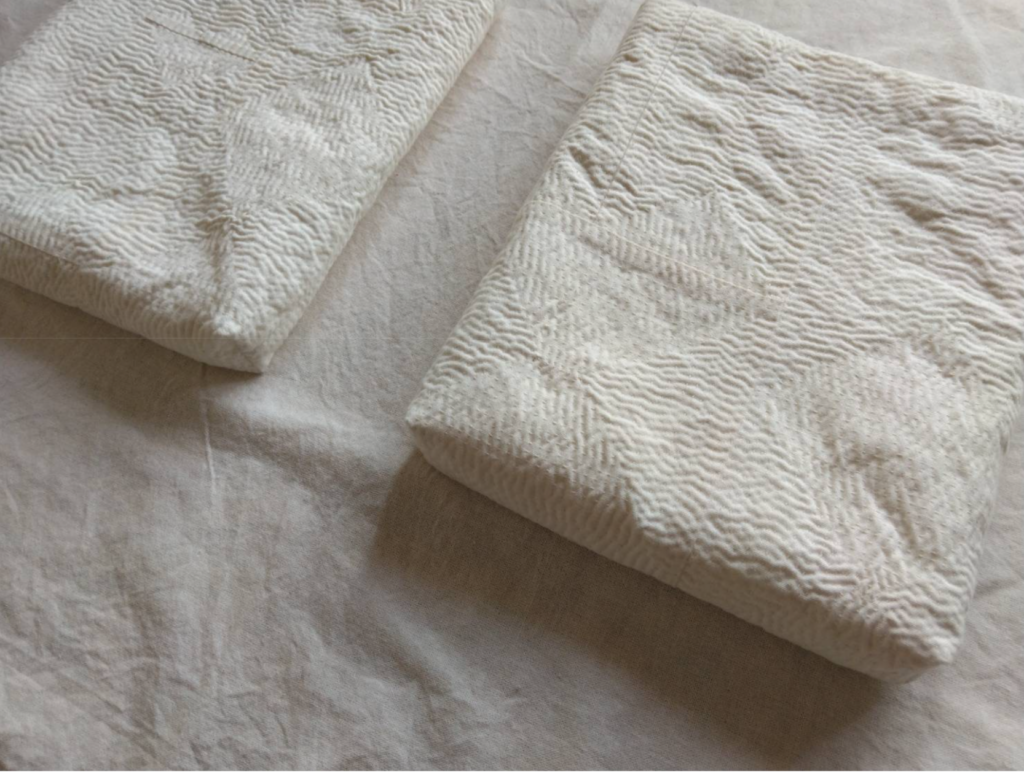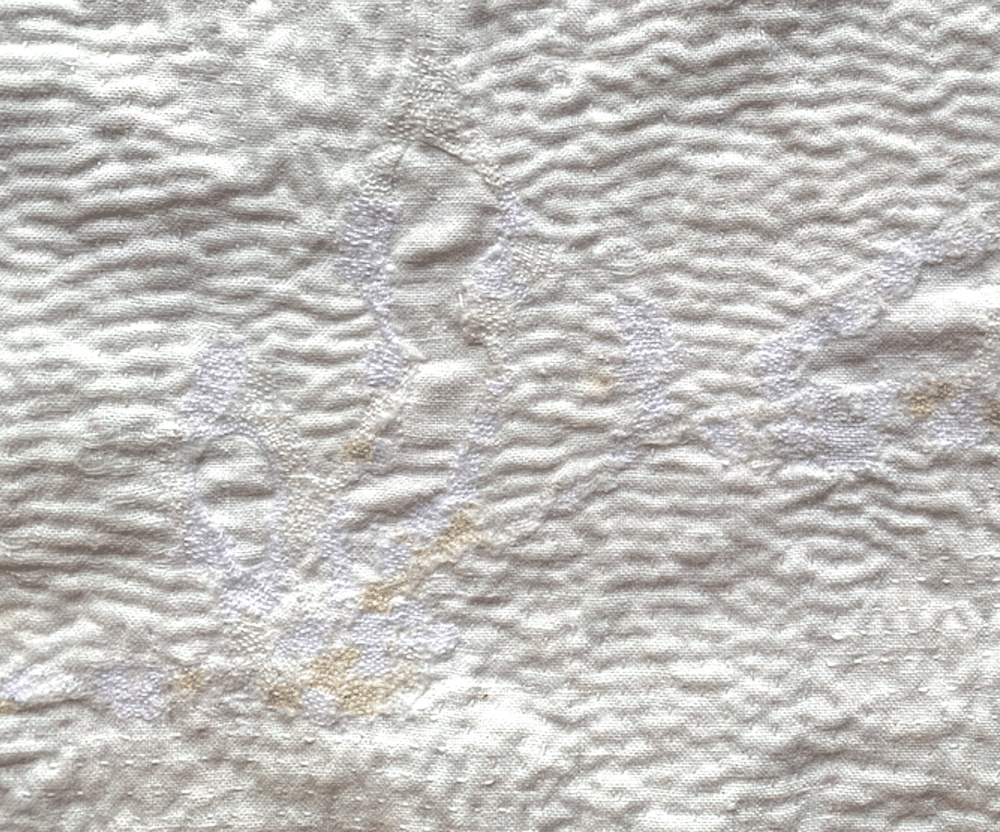Kinuyo said “I only use second-hand cloth.” I knew she did, but never thought it was the “only” material she used.
“Or scraps,” she added.
“It’s interesting to me that some parts of a piece of cloth get picked up to be used for dresses or bags, and some happen to be left out… What happens to these left-out parts?”
“I don’t need to worry about the ‘chosen ones,’ they naturally shine. I’m more interested in shedding light on those who otherwise will be forgotten.”
She describes the process of mending a hole or ripped cloth as empowering. “After the process of mending, the tired, worn-out cloths somehow come back envigorated and radiant.”
I have witnessed her crafts evolve over the past years. She must have made over a million stitches. Through sewing and undoing, she became aware of the waves of fabric that manifest out of these stitches. Now these waves are designed through her meticulously calculated stitches: pinnacle of the art born of intention.

But her true artistry manifests when she surrenders to the “uncontrollable”. Many of her works are done on layered clothes: many are ripped, stretched and thinnered. And none of them is ever the same. (Mind you, fabric feels the softest and gentlest when it is just about to rip. And don’t get me started on the beauty of worn-out denim, so distinct from the artificially pre-damaged ones!)
She sews around the damaged parts extra carefully. And the entire patterns of stitches need to be adjusted around the parts.
These patterns are born out of necessity, not intention. And it shows the beauty beyond one’s intention.
One might consider her decision to only work with used clothes as in line with the current trend of environmental friendliness, but it could also be her declaration to abandon her creative intention, surrendering: surrendering to the co-creative process with the material. What’s more fun than that?

0 Comments